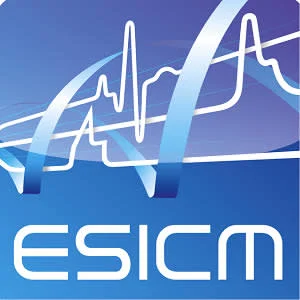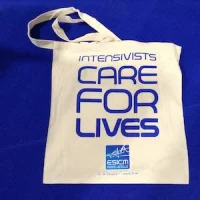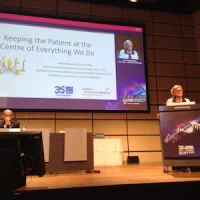Simplified sepsis protocol did not reduce mortality
Among adults with sepsis and hypotension, most of whom were positive for HIV, in a resource-limited setting, a protocol for early resuscitation with administration of intravenous fluids and vasopressors increased in-hospital mortality compared with usual care, according to a randomised clinical trial published in JAMA.
Sepsis mortality in the developed world steadily declined between 2000 and 2012, due in part to the implementation of sepsis protocols emphasising early resuscitation with intravenous fluid boluses and vasopressors to achieve haemodynamic targets. In contrast, mortality from sepsis in low- and middle-income countries remains high and current usual care frequently does not include early resuscitation with intravenous fluid boluses or vasopressors. Whether an early resuscitation protocol could improve sepsis outcomes in resource-limited settings remains uncertain.
The current study included 209 adults with sepsis and hypotension presenting to an emergency department at a 1,500-bed referral hospital in Zambia between 22 October 2012 and 11 November 2013. The trial tested whether a six-hour sepsis protocol emphasising administration of intravenous fluids, vasopressors, and blood transfusion significantly increases in-hospital mortality compared with usual care. Patients were randomised to either (1) an early resuscitation protocol for sepsis (n = 106) that included intravenous fluid bolus administration with monitoring of jugular venous pressure, respiratory rate, and arterial oxygen saturation and treatment with vasopressors targeting mean arterial pressure (65 mm Hg) and blood transfusion (for patients with a haemoglobin level <7 g/dL) or (2) usual care (n = 103) in which treating clinicians determined haemodynamic management. Of the 209 patients, 187 (89.5%) were positive for the human immunodeficiency virus.
The study's primary outcome of in-hospital mortality occurred in 51 of 106 patients (48.1%) in the sepsis protocol group compared with 34 of 103 patients (33.0%) in the usual care group. In the six hours after presentation to the ED, patients in the sepsis protocol group received a median of 3.5 L (interquartile range, 2.7-4.0 L) of intravenous fluid compared with 2.0 L (interquartile range, 1.0-2.5 L) in the usual care group. Fifteen patients (14.2%) in the sepsis protocol group and two patients (1.9%) in the usual care group received vasopressors.
The study findings "suggest that in settings without routine access to mechanical ventilation, the risks of intravenous fluid bolus administration for patients acutely ill from infection may outweigh the benefits," according to the research team led by Ben Andrews, MD, of the Institute for Global Health, Vanderbilt University Medical Center, Nashville, TN. The team noted that further studies are needed to understand the effects of administration of intravenous fluid boluses and vasopressors in patients with sepsis across different low- and middle-income clinical settings and patient populations.
In a linked commentary, Flavia R. Machado, MD, PhD (Department of Anaesthesiology, Pain, and Intensive Care, Federal University of Sao Paulo, Brazil) and Derek C. Angus, MD, MPH (Department of Critical Care Medicine, University of Pittsburgh School of Medicine, Pittsburgh, PA) say the specific protocol tested by Andrews et al. appears harmful in this resource-limited setting.
"However, the exact mechanism is unclear, and it is possible that this study population was particularly susceptible to pulmonary oedema or reperfusion injury from the rate or amount of volume expansion, especially in the absence of sophisticated haemodynamic monitoring or capacity to intervene in the event of complications," Drs. Machado and Angus write.
As the World Health Organization seeks to reduce the global burden of sepsis, the authors say the study by Andrews et al. serves as an important reminder that the answer is not simply to conduct randomised clinical trials in high-income settings and hand down treatment recommendations as part of a knowledge translation initiative. "Rather, knowledge generation has to happen in all settings, which requires a vision and a path toward high-quality multicentre research networks across low- and middle-income countries," Drs. Machado and Angus point out.
ESICM LIVES 2017
Todd Rice will present the results of the trial in the hot topics session, Room Berlin, on Wednesday 27th September, 14.10-17.30
Source: JAMA
Image Credit: ESICM
Latest Articles
hypotension, LIVES 2017, Sepsis care
Among adults with sepsis and hypotension, most of whom were positive for HIV, in a resource-limited setting, a protocol for early resuscitation with administration of intravenous fluids and vasopressors increased in-hospital mortality compared with usual










